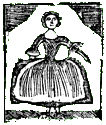 When Capt. James Smithwick was lost at sea in early 1778, as I recounted last week, he left in Boston a widow named Mary and at least three children under the age of ten. Mary remarried the following spring to a man named George Lobb.
When Capt. James Smithwick was lost at sea in early 1778, as I recounted last week, he left in Boston a widow named Mary and at least three children under the age of ten. Mary remarried the following spring to a man named George Lobb.That match didn’t work out. By 1781 Mary Lobb was petitioning to end the marriage.
Divorce was unusual in eighteenth-century Massachusetts, but not unheard of. Among the divorced people I’ve read about are:
- printer Isaiah Thomas, who discovered his wife Mary had an affair with Benjamin Thompson.
- Ann Lovell, whose husband John (eldest son of the longtime schoolteacher with the same name) went insane. (Brent Simon’s Witches, Rakes, and Rogues tells that story.)
In Massachusetts between 1692 (when the Crown established a new royal charter) and 1786, the governor and Council heard divorce cases. Nancy F. Cott’s article “Divorce and the Changing Status of Women in Eighteenth-Century Massachusetts” in the William and Mary Quarterly says:
Puritan divorce theory allowed divorce for incorrigible enmity between spouses or for dangerous abuse, but canon law prescribed only separate bed and board. . . .“Separate bed and board” meant the spouses were legally separated, with husbands paying a sort of alimony, but no freedom to remarry. Wives usually asked for that status, perhaps because they knew it was the best they could realistically hope for.
Of the twenty-three Massachusetts petitions entered on grounds of cruelty,…Not a single one granted divorce.
Mary Lobb petitioned for a separation from her husband George on grounds of cruelty in 1780 or ’81. I haven’t seen the documents of her filing, so I don’t know what she said George had done. Gov. John Hancock and the Council dismissed Mary’s first petition, and she sued again the next year, offering more evidence. That time the body ruled that she deserved “separate bed and board.”
Mary Lobb also took steps to support herself and her children. The town licensed her to sell tea in 1781, then approved her “as a Retailer of Spirituous Liquors at her Shop in Fish Street” in January 1782. That August, town records say:
The Selectmen agree to allow Mrs. Lob, for a Building improved as a Watch house, Seven pounds ten p Annum to commence from the expiration of the last QuarterThe 1798 tax valuation listed Mary Lobb as the owner of three buildings: her home on Reas Court North and more valuable houses rented to “Mary Jenkins” on Fish Street and “Mrs. Doble” on Middle Street.
TOMORROW: What made Mary Lobb really stand out in eighteenth-century Boston.
No comments:
Post a Comment